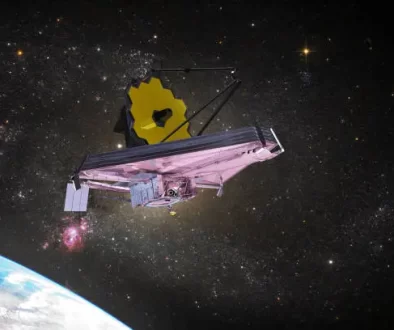Connecting the World: How SpaceX’s Starlink System Revolutionizes Global Internet Access
Today we live in the era of the internet. The Internet has changed the way we live and interact with each other. It has brought education, entertainment, comfort, and even democracy. Imagining a world without the internet is hard. Did you know that almost 50% of the world still does not have access to the internet? That seems strange, but it’s the truth. In response to this challenge and with the aim of making the internet accessible to every individual on Earth, SpaceX, led by Elon Musk, is deploying Starlink Satellites, which are designed to offer worldwide internet coverage. But How does the internet work from space? How can starlink satellites provide internet service from space? Will they transform our world? Let’s talk about all that and more.
The Starlink Initiative
Starlink represents a worldwide endeavor undertaken by SpaceX, with the aim of establishing a global broadband network through a constellation of Low Earth Orbit (LEO) satellites, which are intended to deliver high-speed internet services. This system is ideally suited to provide internet coverage in rural and geographically isolated areas where internet services do not exist.

Technology Behind Starlink
Starlink uses satellite internet service technology that has been around for decades. Instead of employing cable technologies like fiber optics to deliver internet data, a satellite system sends radio signals across space. Ground stations provide signals to satellites in space, which then transfer the information to Starlink users on Earth. Starlink’s objective is to establish low-latency internet connectivity spanning the entire globe.
Advantages of Starlink
However, Starlink isn’t the only company today in the competition of providing internet via satellites. Oneweb, Amazon Kuiper, Viasat, etc., are all targeting this new thriving market. But SpaceX edges past everyone because of the following reasons.
Starlink’s Unique Approach
Starlink employs thousands of tiny satellites rather than a few huge ones. Starlink employs LEO satellites that orbit the Earth at only 300 miles above sea level. This reduced geostationary orbit increases internet speeds and decreases latency. The most recent Starlink satellites contain laser communication parts that allow signals to be sent between satellites, minimizing reliance on several ground stations. In the near future, SpaceX plans to launch up to 40,000 satellites, assuring worldwide and distant satellite coverage with fewer service disruptions.
SpaceX’s Commitment
Starlink has the benefit of being a subsidiary of SpaceX, which, in addition to launching Starlink satellites, also undertakes partner launches on a regular basis. Due to the significant costs involved, other satellite internet providers may be unable to arrange frequent satellite launches. Despite various big achievements by SpaceX with their starship or crew dragon programs, Starlink remains the most frequently launched project by SpaceX. Elon Musk recently stated that SpaceX plans to do a Falcon 9 launch every week and most of them might do Starlink launches if not any major missions. Even the upcoming starship launch vehicles will be used to launch bigger batches of starlink satellites and upcoming Starlink 2.0 versions in the future.
How Starlink Works
So, how does Starlink works? The Starlink satellites are smallsat-class cubesats of about 100 to 500 kg mass, and are launched in Low Earth Orbit at an altitude of about 600 kilometers only. SpaceX launched their first batch of 60 Starlink satellites back in May 2019, each weighing around 230 kg. The initial plan of SpaceX was to launch a satellite constellation made up of 4000 cross-linked satellites. That number today has increased much more.
Technology Behind Starlink
The technology underpinning Starlink is truly remarkable. According to the US FCC, the satellites use optical inter-satellite communications, digital processing technology in the Ku and Ka bands, and phased array beamforming. While details of the phased array technology were revealed as part of the frequency application, SpaceX maintained secrecy on the optical inter-satellite links. The Early Starlink satellites did not have laser connections. In late 2020, the inter-satellite laser connections were successfully tested. In a recent interview, Elon shared his plan to mass produce starlink satellites at a far cheaper cost per unit. Elon Musk expressed, “Our aim is to achieve for satellites what we’ve already accomplished for rockets.” “We must address both satellites and rockets in order to change space.” Smaller satellites are essential for reducing the cost of space-based Internet and communications”, said Elon.

Satellite Orbits and Connections
Because SpaceX is a new player in the satellite communications industry, In February 2015, SpaceX submitted a request to the FCC to investigate innovative uses of the Ka-band spectrum prior to fully embracing 5G communication regulations that could potentially hinder their entry into the market. Starlink satellites orbit at 1105 to 130 times the height of geostationary orbits, providing more feasible Earth-to-sat latencies of 25 to 35 ms, comparable to existing cable and fiber networks. The system will employ a peer-to-peer protocol that is said to be “simpler than IPv6,” as well as end-to-end encryption. For orbit raising and station holding, Starlink satellites employ Hall-effect thrusters using krypton gas as the reaction mass. When compared to a comparable electric propulsion system operated with xenon, krypton Hall thrusters demonstrate much higher flow channel erosion, although krypton is far more common and has a lower market price.
User Terminals and Ground Stations
That is how the satellite constellation is designed to work. But the technology does not connect directly from satellites to phones which is the case with various constellations like Thuraya, Iridium, Inmarsat, and Globalstar. Instead, it uses flat user terminals the size of a pizza box that follows the satellites using phased array antennas. The terminals must be placed anyplace under the view of the sky. The first photographs of the antennas were first sighted back in 2020, which Elon Musk asserted looks like a “UFO on a stick”. This antenna is confusingly labeled as a “Starlink,” but more generally referred to as a “UFO on a Stick” or “Dishy McFloatface.” When it’s cranked up, the self-pointing antenna instantly scans the sky and latches onto the nearest overhead satellite — that is, if the ambient temperature is below 122 degrees Fahrenheit. Subsequently, it effortlessly sustains this connection as each subsequent Starlink satellite enters the field of view while the preceding one gradually disappears beyond the horizon. Starlink terminals have motors to self-adjust the best angle to view the night sky and continuously maintain connection. SpaceX also maintains at least 32 ground stations in the United States and has approvals for many more in the future. Starlink utilizes the Ka-band for its communication with ground stations. A normal Starlink ground station includes nine 2.86-meter antennas in a 400 square meter fenced-off area. SpaceX’s ground stations, according to their filing, would also be installed on-site at Google data centers around the world. Consequently, the service is now dependent on a network of ground stations, which are referred to as gateways. These stations are positioned across the world and exchange signals with the Starlink satellites, tapping them into existing fiber-optic infrastructure. So, a user’s home antenna connects to a Starlink satellite as it passes overhead, which in turn ties them into the nearby gateway. Hence, to access the service, customers are currently required to have a ground station located within a 500-mile radius of their location, along with their own antenna. However, this situation is expected to evolve in the near future. Starlink developers have previously conducted experiments with a set of prototype satellites equipped with laser communication technology. Rather than linking people to a local ground station, the lasers would allow satellites to communicate directly at the speed of light, which is quicker in space than in fiber optic cables. Upon launch, a Falcon 9 rocket releases its batch of 60 Starlink satellites into an initial “parking orbit” at approximately 270 miles (440 kilometers) above the Earth. Subsequently, these individual satellites deploy their solar panels and gradually disperse around the planet. Each satellite employs its onboard rockets to incrementally maneuver to a higher orbit, reaching its eventual position approximately 100 miles (160 km) above the orbit of the International Space Station. As they ascend, the satellites grow fainter, reflecting less sunlight back to Earth. Historically, communication satellites for purposes such as television operated in much higher orbits. This was because being situated at a greater distance from Earth enabled them to cover a larger geographical area for satellite dish reception. Starlink is poised to address issues related to high-speed internet access in rural areas, and with the continuous deployment of additional Starlink satellites in the future, virtually all parts of the world will have access to internet connectivity. Furthermore, Starlink satellites may even play a role in supporting internet communications on Mars, as humanity explores the possibility of terraforming the planet in the future.
I hope this article has provided valuable insights. Thank you for your attention!



